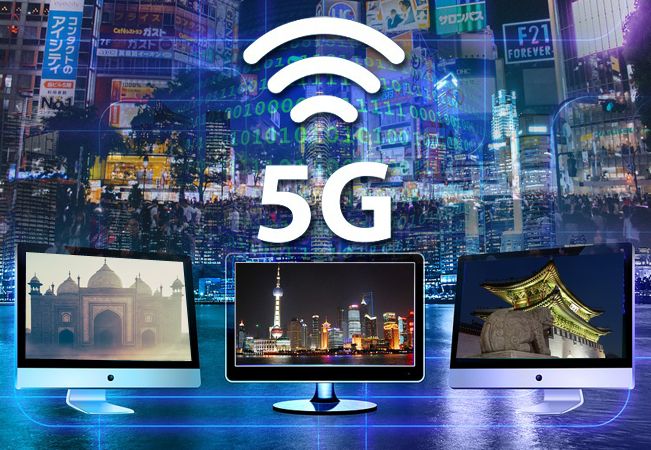Migration of the fourth generation to the fifth generation wireless network has taken place throughout the world though, it has been informally recognized, since the beginning 2018, that Asia region is the winner who turns successful technology in the laboratory into the real world.
Asia Pacific region will become the first region to use commercial 5G service with many reasons , and 5G related innovations basically were originated and developed in Asia.
While you are reading this article, athletes, officers and audiences joining the Winter Olympic 2018 in Pyeongchang, South Korea, have been also experiencing the 5G network there.
However, the industry expected that the fullly commercial 5G experience will come up slightly later. In Asia, it may be sooner, and not later than the Summer Olympic which will be in 2020 in Tokyo, Japan.
Participants at Tokyo Games will be able to stream the video and live feed of the international sports that can be watched concurrently at 4K resolution. Both Pyeongchang and Tokyo Game will be the best 5G technology concrete showcases prior to the broad expansion of new devices, applications and workincclg systems.
Those two showcases, however, is just a consequence of one step ahead other regions of Asia who is the leading 5G network service provider, manufacturer for network and end-users, as well as electronic commercial enterprises.
The white paper of Frost and Sullivan with Principle, published on February 1, raised an issue in the 2017s Global Innovation Index (GII) conducted by Cornel University, Inseed Institute and World Intellectual Property Organization (WIPO) that two of the top three global innovation clusters are in Asia.
The first cluster is Yokohama city in Japan, and the second is Shenzhen in China, both of which rank higher than number three which is in Silicon Valley, in between San Jose and San Francisco, California, in the United States.
The Asian businesses have been globally recognized are Tencent, Alibaba, Huawei, and Xiaomi in China, SoftBank and Rakuten in Japan, as well as Parati Airtel in India. Countries in Asia are producing innovation powerhouses, particularly in the digital economy and telecommunications space. Unquestionably, this trend is likely to continue, especially as countries in Asia lead globally in the development of 5G- the next generation of mobile communication technologies which will soon substitute the current 4G or 4G advanced networks.
Navin Vohra, vice president of wireless sales at ComScope, underlines the 5G movement enthusiasm in Asia where the 5G trial and proof of concept in the region that not only South Korea or Japan, but also China where the 5G already scheduled to be deployed in 100 cities. In Japan, NTT Docomo, KDDI, and SoftBank Group set to invest up to US$45.7 billion in 5G development.
Citing Viavi Solutionss Mr. Vohra said the experimental result before the 5G standardisation showed that the four of the world top six operators who can perform the highest speed data transmission are from the labs of service providers in Asia Pacific.
According to Frost and Sullivan report, a motivation of 5G advancement in Asia ensures the economy is capable of supporting new wave of digital innovations.
Japan and South Korea expected new revenue sources apart from smartphone as they are confident that a larger connection channel and higher speed of 5G will lead to a variety of new applications, ranged from autonomous vehicles to Industrial Internet of Things (IoT) such as automatic connected manufacturing.
China and India have similar incentive but they prioritize them differently from South Korea and Japan. 5G is cited as a strategic priority in the governments 13th Five-year Plan. The Chinese government has also awarded grants to technology ZTE and Huawei, which have received a reported US$72 million for technology development, to achieve the target of 5G rollout by 2030. The IIoT will be 5Gs most critical use case in support of Chinaa Made in China 2025 initiative.
India, however, will restrain 5G deployment to lessen economy gap between urban and rural areas, minimizing the city congestion and enlarge potential of the local based on the mission of Smart City India and Digital India of Prime Minister Narendra Modi. The 5G is also believed to significantly help the countrys manufacturing sector.
อ่านข่าว ภูมิภาคเอเชีย ผู้นำโลกนวัตกรรม 5G










